Construction of an lncRNA-mediated ceRNA network to investigate the inflammatory regulatory mechanisms of ischemic stroke
- PMID: 39847586
- PMCID: PMC11756804
- DOI: 10.1371/journal.pone.0317710
Construction of an lncRNA-mediated ceRNA network to investigate the inflammatory regulatory mechanisms of ischemic stroke
Abstract
Long non-coding RNAs (lncRNAs) are among the most abundant types of non-coding RNAs in the genome and exhibit particularly high expression levels in the brain, where they play crucial roles in various neurophysiological and neuropathological processes. Although ischemic stroke is a complex multifactorial disease, the involvement of brain-derived lncRNAs in its intricate regulatory networks remains inadequately understood. In this study, we established a cerebral ischemia-reperfusion injury model using middle cerebral artery occlusion (MCAO) in male Sprague-Dawley rats. High-throughput sequencing was performed to profile the expression of cortical lncRNAs post-stroke, with subsequent validation using RT-PCR and qRT-PCR. Among the 31,183 lncRNAs detected in the rat cerebral cortex, 551 were differentially expressed between the MCAO and sham-operated groups in the ipsilateral cortex (fold change ≥2.0, P < 0.05). An integrated analysis of the 20 most abundant and significantly differentially expressed lncRNAs (DELs) identified 25 core cytoplasmic DELs, which were used to construct an interaction network based on their targeting relationships. This led to the establishment of a comprehensive lncRNA-miRNA-mRNA regulatory network comprising 12 lncRNAs, 16 sponge miRNAs, and 191 target mRNAs. Gene Ontology (GO) and Kyoto Encyclopedia of Genes and Genomes (KEGG) pathway analyses revealed that differentially expressed mRNAs (DEmRNAs) were significantly enriched in stroke-related pathways. Our analysis predicted four key lncRNAs, four miRNAs, and eleven crucial mRNAs involved in post-transcriptional regulation through competing endogenous RNA (ceRNA) mechanisms. These molecules were shown to participate extensively in post-stroke processes, including angiogenesis, axonal regeneration, inflammatory responses, microglial activation, blood-brain barrier (BBB) disruption, apoptosis, autophagy, ferroptosis, and thrombocytopenia. These findings highlight the role of lncRNAs as multi-level regulators in the complex network of post-stroke mechanisms, providing novel insights into the pathophysiological processes of stroke.
Copyright: © 2025 Xu et al. This is an open access article distributed under the terms of the Creative Commons Attribution License, which permits unrestricted use, distribution, and reproduction in any medium, provided the original author and source are credited.
Conflict of interest statement
The authors declare no conflicts of interest.
Figures


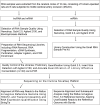


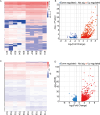
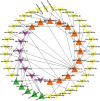
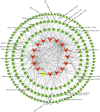
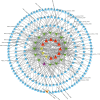




Similar articles
-
Excavating novel diagnostic and prognostic long non-coding RNAs (lncRNAs) for head and neck squamous cell carcinoma: an integrated bioinformatics analysis of competing endogenous RNAs (ceRNAs) and gene co-expression networks.Bioengineered. 2021 Dec;12(2):12821-12838. doi: 10.1080/21655979.2021.2003925. Bioengineered. 2021. PMID: 34898376 Free PMC article.
-
Comprehensive Analysis of lncRNA Expression Pattern and lncRNA-miRNA-mRNA Network in a Rat Model With Cavernous Nerve Injury Erectile Dysfunction.J Sex Med. 2020 Sep;17(9):1603-1617. doi: 10.1016/j.jsxm.2020.05.008. Epub 2020 Jul 13. J Sex Med. 2020. PMID: 32675050
-
Reconstruction of the lncRNA-miRNA-mRNA network based on competitive endogenous RNA reveals functional miRNAs and lncRNAs in burns and keloids.PLoS One. 2025 Apr 9;20(4):e0320855. doi: 10.1371/journal.pone.0320855. eCollection 2025. PLoS One. 2025. PMID: 40203071 Free PMC article.
-
A review on the lncRNA-miRNA-mRNA regulatory networks involved in inflammatory processes in Alzheimer's disease.Brain Res. 2025 Jun 1;1856:149595. doi: 10.1016/j.brainres.2025.149595. Epub 2025 Mar 23. Brain Res. 2025. PMID: 40132722 Review.
-
Comprehensive evaluation of non-coding RNA-mediated autophagy regulation in myocardial ischemia-reperfusion injury.Front Pharmacol. 2025 Apr 25;16:1581341. doi: 10.3389/fphar.2025.1581341. eCollection 2025. Front Pharmacol. 2025. PMID: 40351430 Free PMC article. Review.
Cited by
-
Identification of a potential miRNA-mRNA regulatory network for ischemic stroke by using bioinformatics methods: a retrospective study based on the Gene Expression Omnibus database.Front Immunol. 2025 Apr 14;16:1467865. doi: 10.3389/fimmu.2025.1467865. eCollection 2025. Front Immunol. 2025. PMID: 40297585 Free PMC article.
References
-
- Powers WJ, Rabinstein AA, Ackerson T, Adeoye OM, Bambakidis NC, Becker K, et al.. 2018 Guidelines for the Early Management of Patients With Acute Ischemic Stroke: A Guideline for Healthcare Professionals From the American Heart Association/American Stroke Association. Stroke. 2018;49(3):e46–110. doi: 10.1161/STR.0000000000000158 - DOI - PubMed
MeSH terms
Substances
LinkOut - more resources
Full Text Sources
Medical

